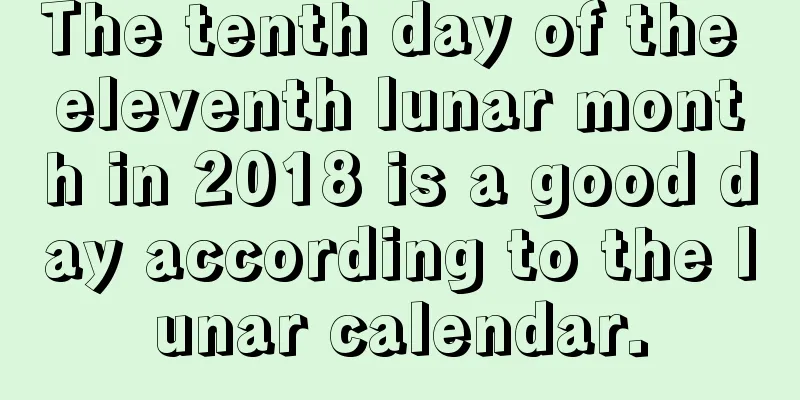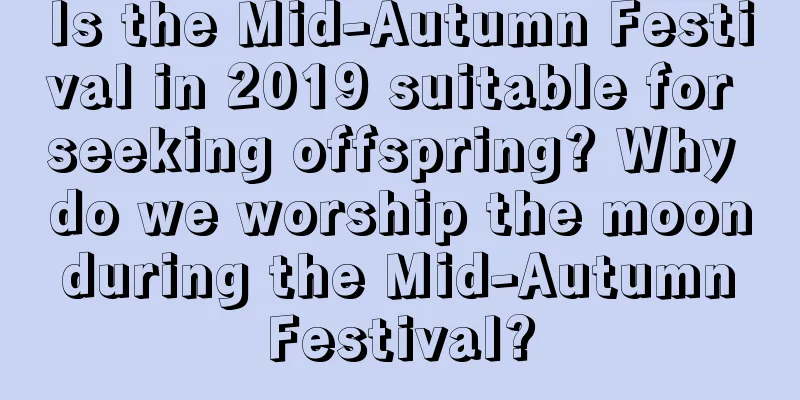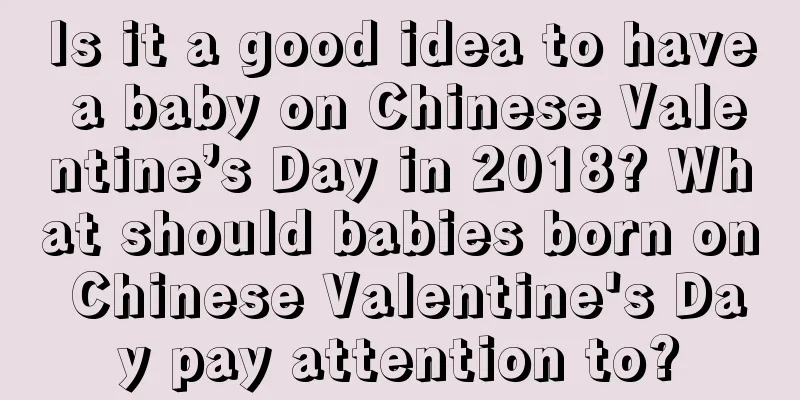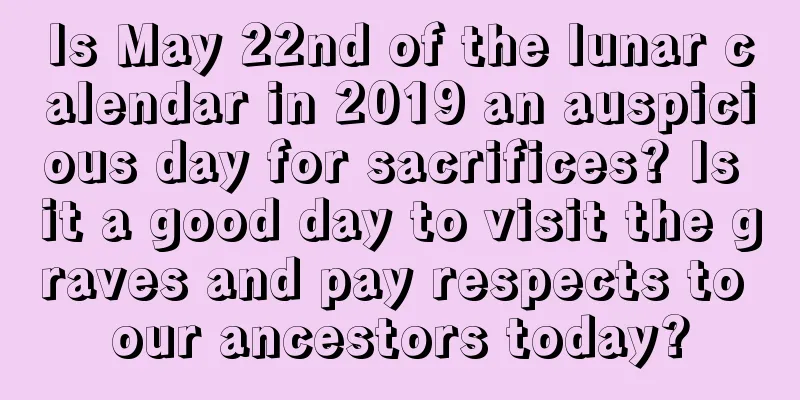Is Mid-Autumn Festival also called the Moon-Chasing Festival? What was the ancient Mid-Autumn Festival called?
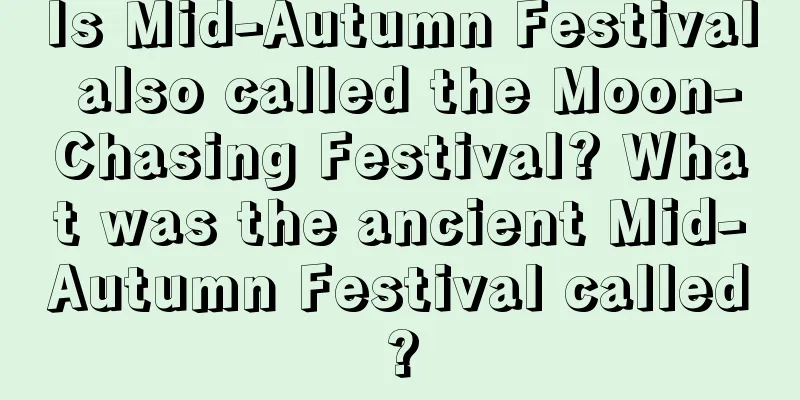
Mid-Autumn Festival is a festival of reunion and a day of happiness. The Mid-Autumn Festival has many other names. Is the Mid-Autumn Festival also called the Moon-Chasing Festival? What was the Mid-Autumn Festival called in ancient times? Autumn is the season of harvest. As the eighth month of the lunar calendar arrives, the autumn atmosphere gradually becomes stronger. The autumn breeze brings coolness, and days like this should be beautiful every day. Shuimoxiansheng.com will accompany you through every day of the eighth lunar month of 2019.Is Mid-Autumn Festival also called the Moon-Chasing Festival?The Mid-Autumn Festival, also known as the Moon-Chasing Festival, is one of my country's traditional festivals. The Mid-Autumn Festival began in the early Tang Dynasty, became popular in the Song Dynasty, and by the Ming and Qing Dynasties, it had become one of China's major festivals along with the Spring Festival. Until now, the connotations of the Mid-Autumn Festival, such as family reunion and moon-watching, are still the mainstream significance of our celebration of the festival.Mid-Autumn Festival Food Customs 《1》Osmanthus cake - Osmanthus wine, the sweet scent of osmanthus in August. Indeed, the Mid-Autumn Festival is the time when the sweet scent of osmanthus fills the air. During the Mid-Autumn Festival, many families use osmanthus to make osmanthus cake or soak osmanthus wine. Both osmanthus cake and osmanthus wine exude the unique fragrance of osmanthus without exception. 《2》Snail - In many places in Guangdong, there is a custom of eating snails during the Mid-Autumn Festival. Around the Mid-Autumn Festival, the snails are empty-bellied and have no small snails in their stomachs. Therefore, the meat is particularly plump and delicious, and it is the best time to eat snails. Moreover, snail meat is rich in nutrients, and the vitamin A it contains is an important substance for eye visual pigments. What was the Mid-Autumn Festival called in ancient times?"Rabbit Festival" - In old Beijing, there is a custom of offering sacrifices to the Rabbit God during the Mid-Autumn Festival. Men and women of all ages in the capital also call this day "Rabbit Festival". The Rabbit God is a folk god unique to Beijing. The Kitchen God Temple on Flower Market Street outside Chongwenmen is considered to be the home of the Rabbit God. As soon as the eighth month of the lunar calendar arrives, there is an endless stream of people coming to buy the Rabbit God."Moon-Playing Festival" - On this day, there was an ancient custom of playing under the moon and holding banquets to enjoy the moon, so it was called the "Moon-Playing Festival". In the "Mid-Autumn Festival" entry in "Dongjing Menghualu" by Meng Yuanlao of the Northern Song Dynasty, it is said that "On the night of Mid-Autumn Festival, the rich families decorate their pavilions and terraces, while the common people scramble to occupy restaurants to enjoy the moon." The royal family at that time would also hold a "Mid-Autumn Festival Gala". Ordinary people would not rest early, even children would not sleep. "Children in the neighborhood played all night long. The night market was crowded until dawn." "August Meeting" - The August Meeting is also known as the "Tuning Festival". A traditional folk festival of the Han nationality. Popular in Danzhou City, Hainan Province. It is held on the 15th day of the eighth lunar month every year. On this day, young men and women who farmed gathered in the town and gave each other fragrant cakes, moon cakes, flower scarves, colorful fans, vests, etc. They come in groups and flow through the city. Crowded out of the village at night. Go to the designated gathering place for a large-scale vocal tuning and singing activity. "Moon Eve" - The ancients regarded the 15th day of the second lunar month as "Flower Festival". Correspondingly, the 15th day of the eighth lunar month was also called "Moon Eve". The moon on August 15 is rounder and brighter than the full moons in other months, which is one of the reasons why it is called "Moon Eve". Since ancient times, the Mid-Autumn Festival has had customs such as worshiping the moon, appreciating the moon, eating moon cakes, appreciating osmanthus flowers, and drinking osmanthus wine. These customs have been passed down to this day and have lasted for a long time. The Mid-Autumn Festival, with the roundness of the moon symbolizing family reunion, is a way to express longing for hometown and loved ones, and to pray for a good harvest and happiness. It has become a rich and precious cultural heritage. The Mid-Autumn Festival is known as one of China's four major traditional festivals, along with the Dragon Boat Festival, the Spring Festival and the Tomb-Sweeping Day. |
<<: What is the history of National Day? What benefits are there for National Day?
Recommend
Is the second day of the ninth lunar month in 2019 a good day? Is it an auspicious day?
Is the second day of the ninth lunar month in 2019...
Is it possible to get engaged on March 12th of the lunar calendar in 2022?
There are certain rules and considerations for cho...
Can I move on the twelfth day of the seventh lunar month in 2018? Is it a good time to move into a new house?
Want to know more about the dates in the seventh ...
Is May 29th of the lunar calendar in 2022 a good day? Is it an auspicious day to pick up the car? Is it suitable to pick up the car?
The fifth month of the lunar calendar is the secon...
The legend about the five-colored rope of the Dragon Boat Festival. An inventory of the customs of the Dragon Boat Festival in 2019!
The Dragon Boat Festival is also known as "Do...
Is it a good time to open a company or new store on December 11, 2018 in the lunar calendar?
The twelfth month of the lunar calendar is the tw...
Can I get married on the eighth day of the ninth lunar month in 2017? Is it okay to get engaged and get a marriage certificate?
It is such a deep autumn, so golden, and so fruit...
What are the do's and don'ts for Chinese Valentine's Day in 2019? Which country did Chinese Valentine's Day originate from?
Introduction: Qixi Festival is an important tradit...
Can acupuncture be performed on the day of the Beginning of Heat in 2019? When will the end of the dog days end in 2019?
Introduction: Chushu is one of the 24 solar terms,...
Can I start a business on April 15th of the lunar calendar in 2018?
Chinese people believe in fate and value tradition...
Can we pray for blessings during the Big Snow solar term on October 23rd of the lunar calendar in the Year of the Rat 2020?
Can we pray for blessings during the Big Snow sola...
Is November 26th of the lunar calendar in 2021 an auspicious day for visiting graves and worshiping ancestors?
Every day is good and bad, so let’s take a look at...
Auspicious days for opening a business in May of the lunar calendar in 2022, check the auspicious days for store opening
Auspicious days for opening a business in May of t...
What are the taboos on the 28th day of the fifth lunar month in 2018?
The Book of Songs records that “cicadas chirp in ...
Where is the God of Wealth on the fourth day of September 2019? Who is the legendary God of Wealth?
Where is the God of Wealth on the fourth day of S...


